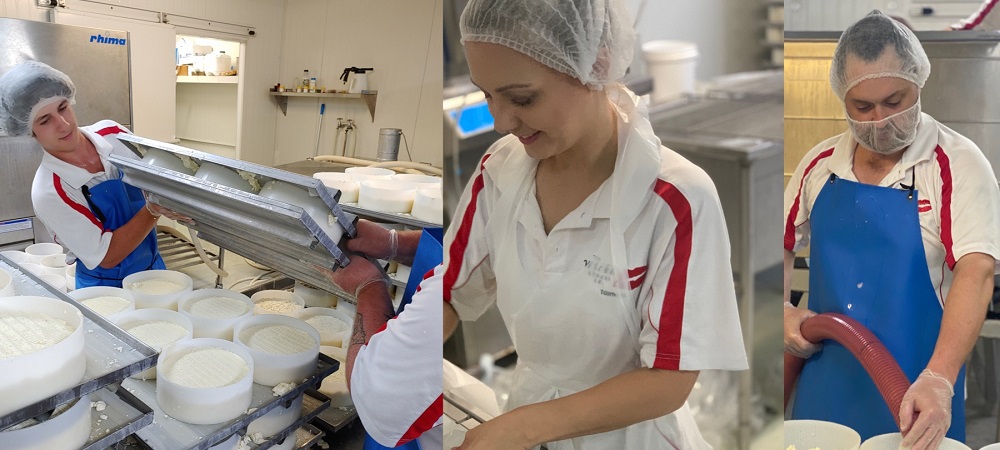Just How Floridia Cheese Melbourne Establishes the Requirement for Local Cheese Makers
Just How Floridia Cheese Melbourne Establishes the Requirement for Local Cheese Makers
Blog Article
Opening the Tricks of Artisanal Cheese Making: A Step-by-Step Do It Yourself Guide
In the world of culinary craftsmanship, artisanal cheese making stands as a testament to the delicate balance between practice and development. Each action in the procedure, from picking the right milk to developing aging strategies, holds within it a riches of understanding gave through generations. As we get started on this trip to debunk the art of developing splendid cheeses, we are faced with a tapestry of skills and secrets waiting to be unraveled. Join us as we check out the intricacies of this ancient craft, where perseverance, scientific research, and art merge to create tastes that tantalize the senses.
Picking the Right Milk
When getting started on the trip of artisanal cheese production, the option of milk plays an important function in figuring out the quality and characteristics of the final item. The kind of milk picked influences the flavor, appearance, and generally account of the cheese.
Additionally, the source of the milk, whether from cows, goats, sheep, or buffalo, adds unique flavors and qualities to the cheese. Each type of milk brings its very own subtleties, permitting for a vast range of cheese ranges to be crafted based on the picked milk.
Culturing and Coagulating
To initiate the cheese-making process, the important actions of culturing and coagulating must be very carefully performed to transform milk right into curds and whey. The type of society made use of can significantly affect the flavor, texture, and ripening of the final cheese product.

The timing and temperature level control throughout culturing and coagulation are vital factors that affect the final outcome of the cheese. Proper implementation of these steps is essential to make sure the wanted structure, taste, and consistency of the artisanal cheese being created.
Draining and Pressing Curds
After the milk proteins have actually coagulated and the curds have been reduced to launch whey, the next crucial step in artisanal cheese making entails draining pipes and pushing the curds to achieve the preferred texture and consistency of the last cheese product. Draining pipes is the process of separating the curds from the whey. This can be done by moving the curds right into a cheesecloth-lined colander or mold and mildew and allowing the whey to drain off naturally. The moment for draining pipes can differ relying on the kind of cheese being made and the wanted dampness web content.
Pressing helps eliminate any staying Cheese Makers Melbourne whey and compacts the curds to create a solid cheese wheel. Appropriate pushing and draining are crucial steps that dramatically influence the quality and features of the artisanal cheese being produced.
Aging and Flavoring Strategies
Applying meticulous aging and flavor strategies is crucial in improving the depth and complexity of artisanal cheeses, raising their preference profiles to exquisite levels of refinement and elegance. Aging plays a crucial role in developing the distinct tastes and appearances that distinguish artisanal cheeses.
Flavoring strategies additionally add substantially to the final taste of artisanal cheeses. Cheesemakers might select to introduce extra tastes by incorporating ingredients such as herbs, spices, or perhaps fruits into celebrity during the production process. Furthermore, some cheeses are washed or massaged with various fluids, such as brine or alcohol, to improve their textures and tastes.
Covering and Keeping Cheeses

Conclusion
Finally, understanding the art of artisanal cheese making includes very carefully picking the appropriate milk, adhering to accurate culturing and coagulating processes, draining pipes and pressing curds effectively, and using various aging and flavoring strategies. By following these steps vigilantly and with attention to information, you can develop your own delicious and one-of-a-kind cheeses in the house. Remember to cover and save your cheeses effectively to ensure optimum taste and texture advancement. Pleased cheese making!
Each kind of milk brings its own subtleties, allowing for a vast array of cheese selections to be crafted based on the chosen milk.After the milk proteins have actually coagulated and the curds have been reduced to launch whey, the following important step in artisanal cheese making entails draining and pressing the curds to attain the wanted texture and consistency of the last cheese item. Most cheeses need to be wrapped in wax paper or cheese paper to allow them to breathe while protecting them from drying out. For cheeses that need to proceed aging, such as bloomy peels or washed peels, ensure they are stored in a cool environment like a cheese cavern or a refrigerator established to the ideal temperature. By paying attention to the covering and storage of artisanal cheeses, cheese makers and enthusiasts can protect the integrity of these delicacies and completely appreciate their complicated tastes.
Report this page